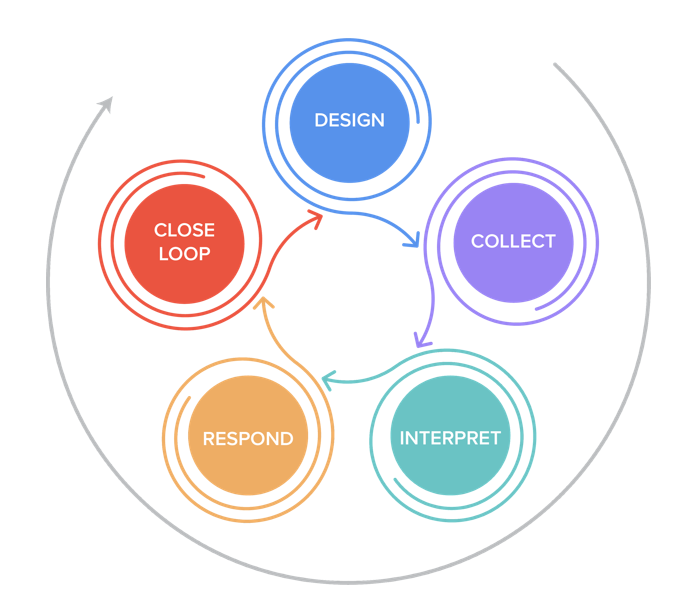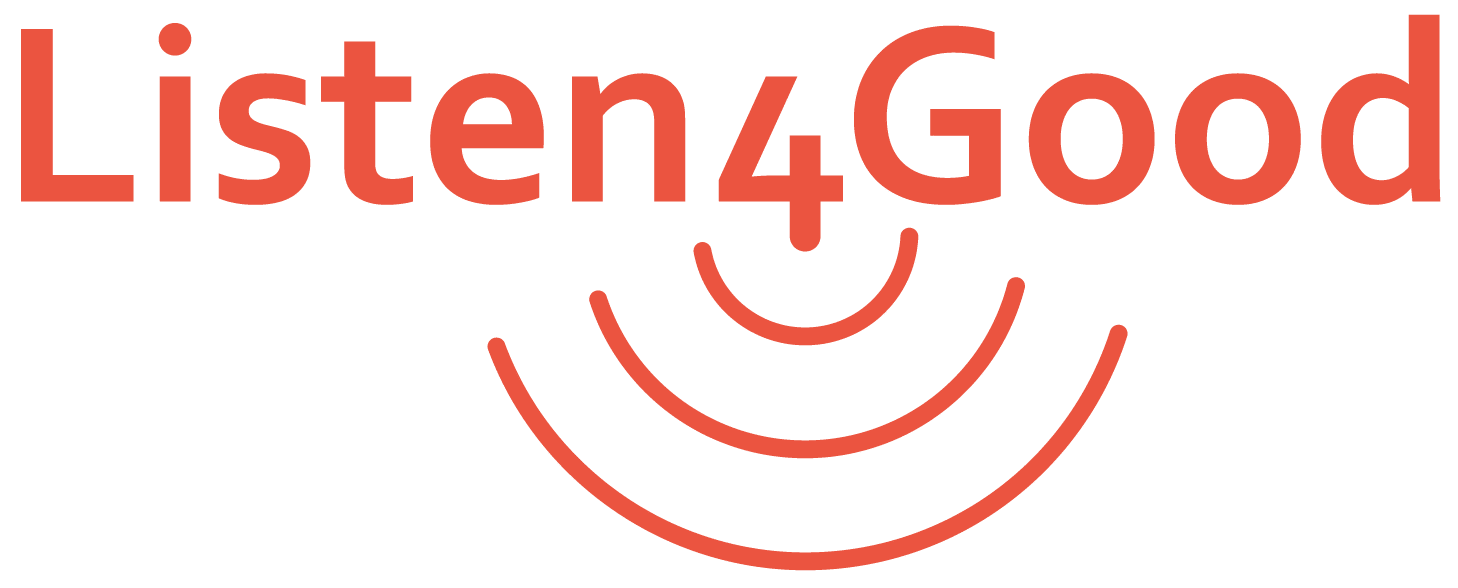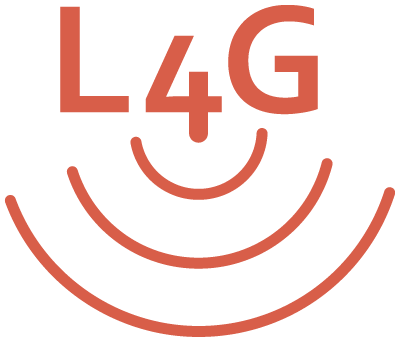What Is A Feedback Loop? | Listen4Good

What Is A Feedback Loop: Creating Feedback From Nonprofit Supporters
Although it is common practice for businesses to ask their customers for feedback, nonprofits, government agencies, and foundations historically have not solicited feedback from the people and communities they serve.
That is changing. Today, more and more organizations in the social sector understand the importance of collecting feedback from nonprofit supporters as well as from clients, or those they serve. They see how it is possible to use feedback to continuously improve what they do and build community.
When done well, feedback loops can create trust and authentic partnership by sharing power equitably between organizations and the clients they serve.
What is a Feedback Loop?
To put it most simply, a feedback loop is the system of gathering and responding to client feedback – i.e., clients’ perspectives, feelings and opinions about their experience with an organization or service.
Not all feedback loops are created equal, however. At Listen4Good, we focus on building high-quality, equity-based feedback to help organizations listen and respond to their clients’ needs and experiences.
We believe that quality and equity are two essential qualities of any feedback loop, and that the higher the quality of the feedback practice, the higher the potential that practice holds for promoting equity.
Ultimately, we aim to enable clients to have increased say and power over how services are implemented.
You can read more about Listen4Good’s feedback approach here.
5 Steps of Creating A Feedback Loop
Listen4Good uses a five-step system, modeled after a continuous improvement cycle, for creating a feedback loop. This system works for nonprofit organizations of all sizes, as well as government agencies and public/private collaborations. Below, we describe each of the five steps and provide feedback loop examples.
- Design – First, we work with an organization to create an accessible, inclusive, and relevant feedback collection approach. An organization will carefully design a short survey with questions that will yield data that the organization can act upon. Example: Natividad Foundation knew that many of Natividad’s patients from Mexico spoke indigenous languages which did not have written forms. Instead of using the typical survey design, using number ratings of zero to ten, they designed a survey with pictures.
- Collect – In this step, the survey is administered to clients. The goal of collection is to do so in a way that promotes accessibility, captures a large number of representative client voices, and minimizes courtesy bias. The organization administers the survey to clients and reassures clients that they will not lose access to services based on their feedback. Example: Bronx Defenders, with L4G’s support, collected feedback using new methods that allowed the organization to reach a broader base of its clients than it could before, including clients who were incarcerated and awaiting trial.
- Interpret – Once survey results are collected, the organization identifies areas for celebration, as well as areas for improvement. We pay particular attention to feedback from historically marginalized groups and other voices at the margins. Benchmarks that help norm feedback can also be helpful at this stage. Example: Birmingham Talks reviewed its L4G data to find that families wanted specific kinds of books and learning materials for engagement, allowing the organization to focus on the things their clients wanted most.
- Respond – Once the interpretation step is finished, the organization engages internal and external stakeholders (including clients) to learn from client feedback and implement changes based on what is learned. Example: Second Harvest Food Bank of Santa Clara and San Mateo Counties responded to feedback that individuals who identified as Asian felt less welcome and respected by conducting more staff training and translating client-facing informational materials into Vietnamese, Mandarin, and other languages. As a result, the organization saw an uptick in the number of Asian clients.
- Close the Loop – In the fifth and final step, organizations communicate back to clients what was learned from listening to them. They also detail the specific ways that the organization plans to respond to the feedback. Example: Society St. Vincent DePaul Phoenix closed the loop with individuals who attend its “Family Evening Meal” (i.e., dinner in one of their charity dining rooms) by creating paper placemats summarizing findings and improvements the organization was planning to make. Useful and informative!
What are Positive & Negative Feedback Loops?
The concepts of positive and negative feedback loops tend to refer to biological or mechanical feedback loops in biology and engineering. In general though, a positive feedback loop is one in which changes are made that create notable differences from the original state or status of how things are done. Negative feedback loops encourage movement back to the status quo.
In our experience, both positive feedback which highlights what an organization is doing well in its service delivery and negative feedback describing ways organizations can do better can both motivate changes in organizations, as they tell organizations what they should do more of and also what they need to do differently.
For example, Maternal and Family Health Services, like many organizations during the pandemic, had to replace in-person interactions. Nurses devised creative ways, such as texts, phone calls, and telehealth, to stay in touch with the new moms they supported, but still felt disconnected. Much to the nurses’ surprise, clients who were surveyed reported that they felt an authentic connection and support from their nurses, affirming the delivery model worked, while boosting the staff morale of the nurses.
In contrast, Volunteers in Medicine learned that a significant number of their clients needed medical translation services in Spanish. They used that data to advocate for, and obtain, funding for a healthcare-specific language translation program which allowed them to deliver services more effectively.
A note about critical or negative feedback. It’s a regular and expected part of the feedback loop process. Suggested improvements could be logistical, focused on content, or it could be related to issues of inclusivity and equity. To manage the understandable staff concerns around receiving negative feedback, it’s critical to get staff buy-in and support for gathering feedback, so that they understand how feedback – positive or negative – will help inform efforts to improve what they do.
Benefits of Feedback Loops
When used effectively, feedback loops provide a number of benefits to organizations to help them improve across a range of areas, including service delivery; better data for fundraising, advocacy, and reporting; and sharing power more effectively with clients.
There are different ways that organizations can use feedback. Here are a few examples:
- Identifying strengths and weaknesses: It’s helpful to gather feedback about what an organization is doing well, as well as the things it can improve upon. Feedback doesn’t have to be a black and white process. For example, Women’s Resource Center learned that participants in its Safe Dates program appreciated learning about ways to help a friend in an abusive relationship. However, they also learned that participants wished to explore additional topics such as same-sex relationships, consent, and gender in more detail.
- Increasing donor retention: Donors – whether they are individuals or foundations – appreciate knowing how their money is being used, and how it is helping organizations fulfill their mission. The data collected during the feedback process is useful not only to assess how an organization is doing. It also helps to codify results and impact, which matter to donors. By regularly sharing data with your donors, either through reporting or regular communication, donors are more likely to continue their support.
- Improving service delivery through partnership: Partnership development is a dynamic, continuous process. Feedback offers the opportunity to identify and engage your partners and community on a regular basis. Nonprofits typically have a finger on the pulse of community happenings and develop a network of partners and resources to call on as needed. Strong feedback loops provide a structured opportunity to generate even more awareness and collaboration within a community, allowing it to continue to grow and thrive.
Feedback Loop Best Practices
It’s important to keep strategy in mind when creating feedback loops. While we are always refining our tools and techniques, we have found that some of the best practices remain constant. Here are three highlights from our list of best practices:
- Asking the right questions: It is best to start with a short core set of questions, and then work to design custom questions that will yield actionable information. The full list of survey questions should not exceed twenty, and should also include questions around demographics and other characteristics to allow for better analysis and segmentation.
- Prompting answers from the right audience: How you ask a question, and who you ask, are also important considerations when designing a strong feedback loop. You’ll want to make sure that you use language that is simple and understandable, and that you are attempting to survey as many clients as possible, especially those from historically marginalized groups.
- Encouraging candor: Sometimes clients do not share their complete opinion for fear of losing access to services. When administering surveys, it is important to reassure clients that they will not face retaliation if they provide negative feedback. Starting with anonymous feedback is also a great way to generate early trust. The best feedback loops gather credible, candid feedback.
How Listen4Good Helps Nonprofits With Feedback Loops
Listen4Good helps organizations build and sustain systems that gather direct high-quality feedback from the people and communities they serve.
Since 2016, we have provided over 675 organizations with capacity-building services and expert guidance on how to build equity-grounded feedback loops that improve program effectiveness, impact, and service delivery while facilitating sustained power shifts between clients and organizations.
We employ a diverse group of coaching and support professionals who have expertise in survey design, data analysis, and organizational change and bring a strong equity lens to their work. Additionally, through our interactive web app, we provide organizations with access to our proven feedback tools, peer best practices, and rich content.
Ultimately, we aim to create equitable feedback practices that lay the groundwork for sustained shifts in how an organization listens to and shares decision-making power with its clients.
Download an overview of Listen4Good here.
Download the Listen4Good Best Practices Guide here.
To learn more about how Listen4Good can help your organization, register for a free one-hour informational session.

